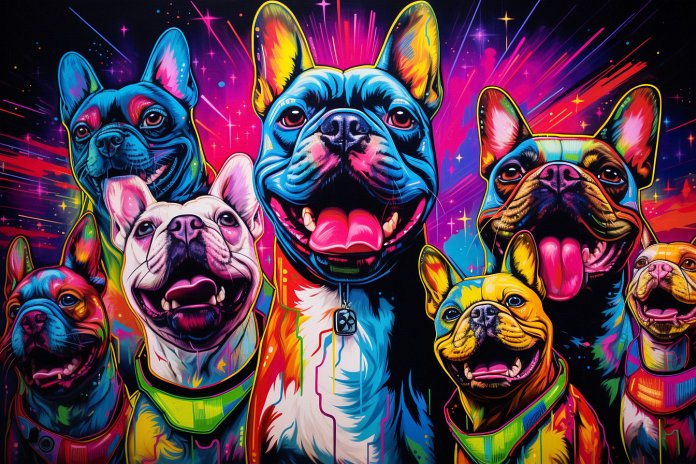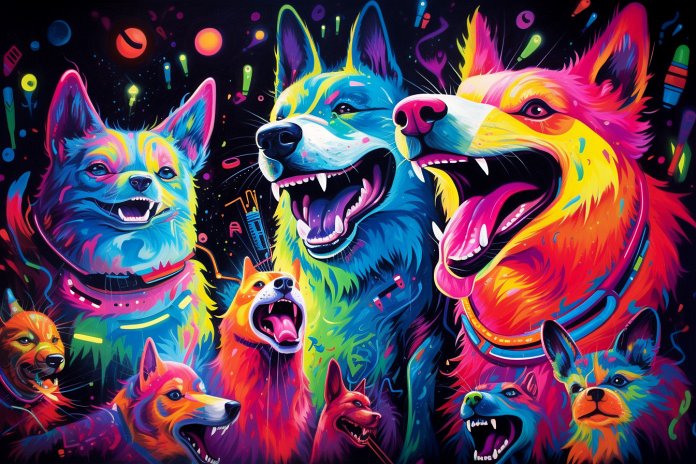
In recent years, researchers have made significant progress in understanding how dogs perceive the world. This knowledge has shed light on various aspects of dog vision, from the colors they can see to the quality of their vision. However, many misconceptions still exist regarding a dog’s visual abilities. We aim to dispel these myths and provide a comprehensive understanding of how dogs see the world.
Signs that Dogs Can See Colors
Contrary to popular belief, the brightness of a color does not determine how well dogs can see it. There are several signs that indicate dogs can perceive colors to some extent. For example, dogs may show a particular interest in toys that are yellow or blue. Additionally, they may have difficulty locating toys that are green or orange in grassy areas. Yellow tennis balls, in particular, are popular among dogs for their visibility.
However, it is important to note that while research has focused on identifying the colors dogs can see, it has also revealed that dogs do not have as sharp vision as humans, which can impact how they perceive the world.
Body Language
Observing a dog’s body language can provide further evidence of their ability to see colors. Signs such as staring, alertness, barking, and wagging their tail indicate that dogs can perceive some colors.
Other Signs
Additional signs that dogs can see colors include their preference for toys of a certain color and their ability to sort toys based on color.
History of Dogs’ Ability to See Neon Colors
While specific research on dogs’ ability to see neon colors is lacking, studies have shown that dogs have a limited color spectrum, including blues and yellows. Early beliefs that dogs were completely colorblind have been debunked, and it is now understood that dogs can perceive certain colors. Their color spectrum consists of dark blue, light blue, gray, light yellow, darker yellow (resembling brown), and dark gray, unlike the rainbow of colors visible to humans.
When dogs encounter colors outside their spectrum, they perceive them as colors within their range. For example, green, yellow, and orange appear as yellowish shades to dogs, while violet and blue appear as blue, and blue-green appears gray.
Science Behind Dogs Seeing Colors
Dogs’ ability to perceive colors is determined by their retinas, which contain cone cells. Unlike humans, who have three types of cones, dogs have only two. This allows them to see shades of blue and yellow, similar to individuals with red-green color blindness. The absence of the third cone type restricts dogs from seeing reds, greens, pinks, oranges, and purples.
Whether dogs can see neon colors depends on the specific color. Dogs can perceive neon yellow and blue but not neon shades of other colors.
Training Using Colors Dogs See
Contrary to human preference, dogs do not perceive red and orange as vibrant colors. Instead, they view them as brown or dull yellow. Therefore, yellow and blue toys appear more visually appealing to dogs.
While it is possible to train dogs to differentiate between colored and white objects, teaching them to distinguish between the various colors humans perceive is challenging. Dogs struggle to recognize colors like red, green, and orange, which complicates agility training. Handlers must understand how dogs perceive the world to ensure effective communication and safety during training. Wearing colors within a dog’s visual spectrum, such as blue, enhances visibility and facilitates better understanding of cues.
In these situations, the brightness of neon colors becomes irrelevant, as dogs are unaware of their brightness. Instead, emphasis should be placed on colors within a dog’s spectrum.
“Dogs see a limited color spectrum, but understanding their vision can improve training and communication.”

Tips & Things to Know
1️⃣ Dogs can see colors, but their color spectrum is limited. They can see shades of blues and yellows, but cannot see reds, greens, pinks, oranges, and purples. When choosing toys or training equipment, opt for vibrant yellow and blue colors that your dog can see better.
2️⃣ Observe your dog’s body language to determine if they can see certain colors. If your dog shows interest in toys that are yellow or blue, it indicates that they can distinguish these colors. Similarly, if they have difficulty finding toys that are green or orange in the grass, it suggests that these colors blend in for them.
3️⃣ When participating in agility training or other activities where communication with your dog is crucial, consider how they perceive colors. Dress in colors that contrast with the environment to make it easier for your dog to see and understand your cues. Wearing a blue outfit, for example, can enhance visibility for your dog and improve communication.
Frequently Asked Questions, Answered ✅
1. What colors can dogs see?
– Dogs can see shades of blues and yellows, but they cannot see reds, greens, pinks, oranges, and purples.
2. Can dogs see neon colors?
– Dogs can see neon yellow and blue, but not neon shades of any other color.
3. How does a dog’s vision affect their ability to play with toys?
– Dogs may have a preference for toys that are yellow or blue, as these colors are more easily visible to them. Toys that are green or orange may blend into the grass and be harder for dogs to see.
4. How does a dog’s vision impact their body language?
– Dogs may exhibit body language signs such as staring, being alert, barking, and wagging their tail to show that they can see some colors.
5. Why is it important for agility handlers to understand how dogs see the world?
– Understanding how dogs see the world is important for agility handlers because it can affect their communication signals with the dog. Dressing in colors that dogs can easily see can help improve communication and prevent accidents during agility training.